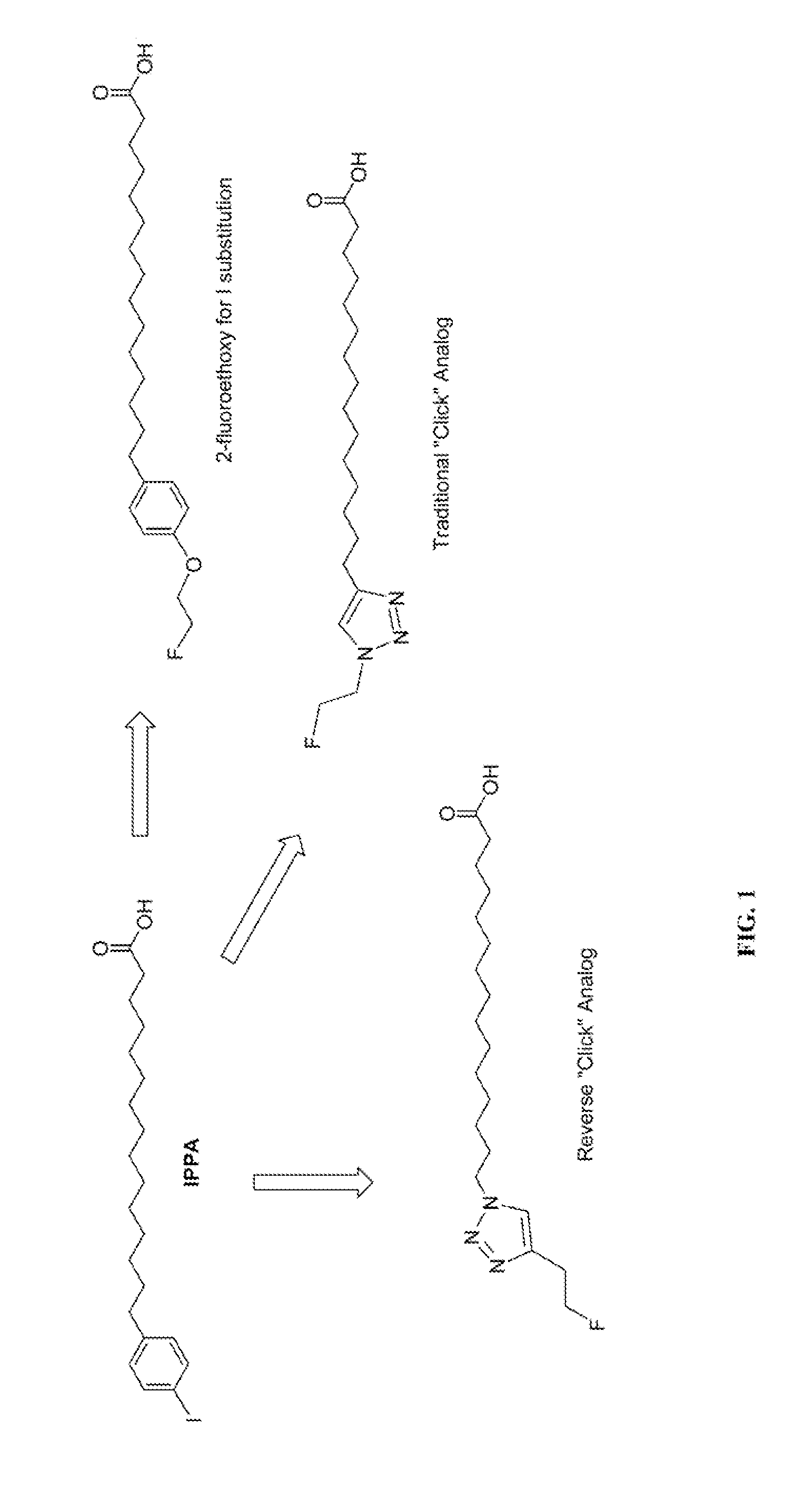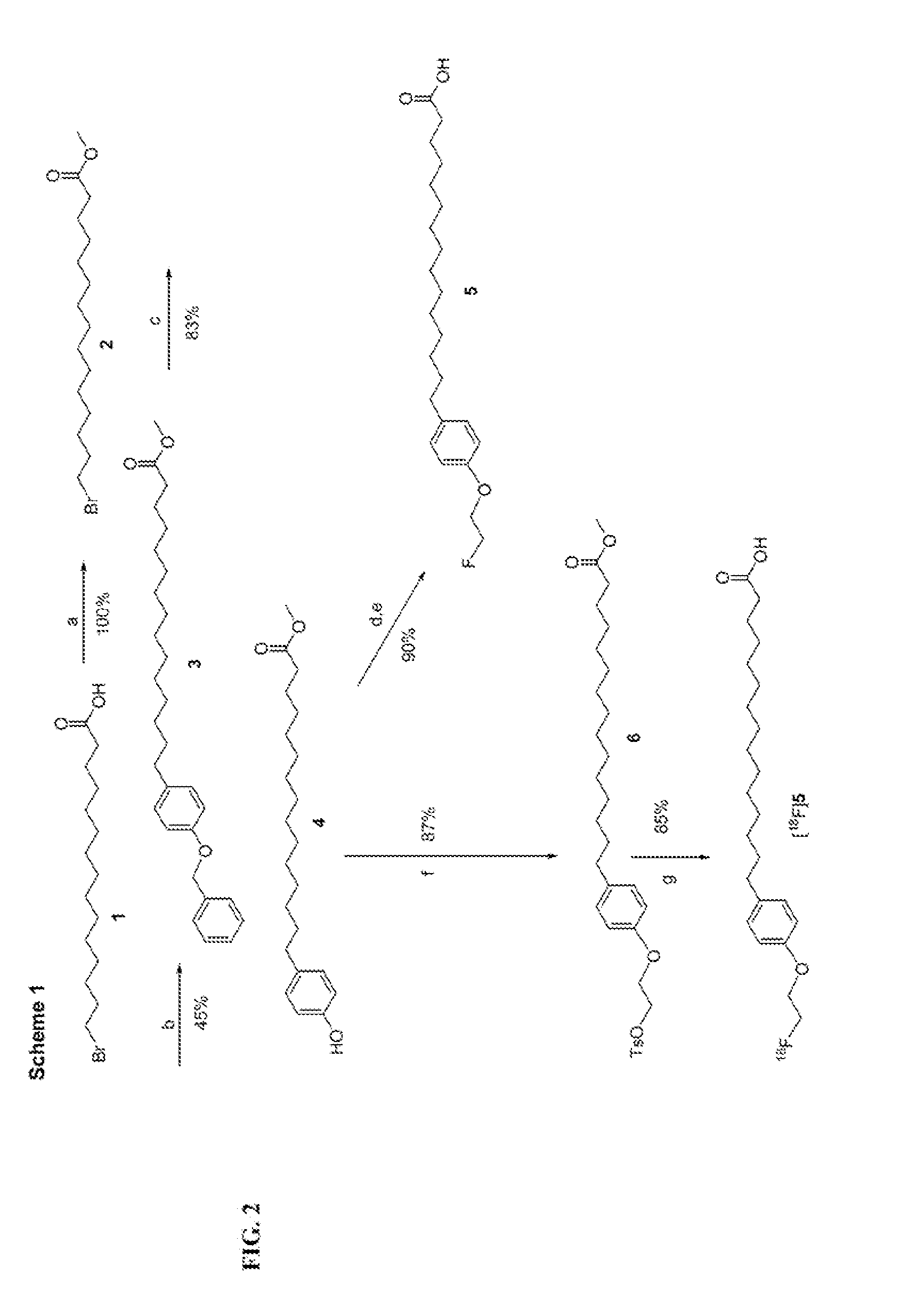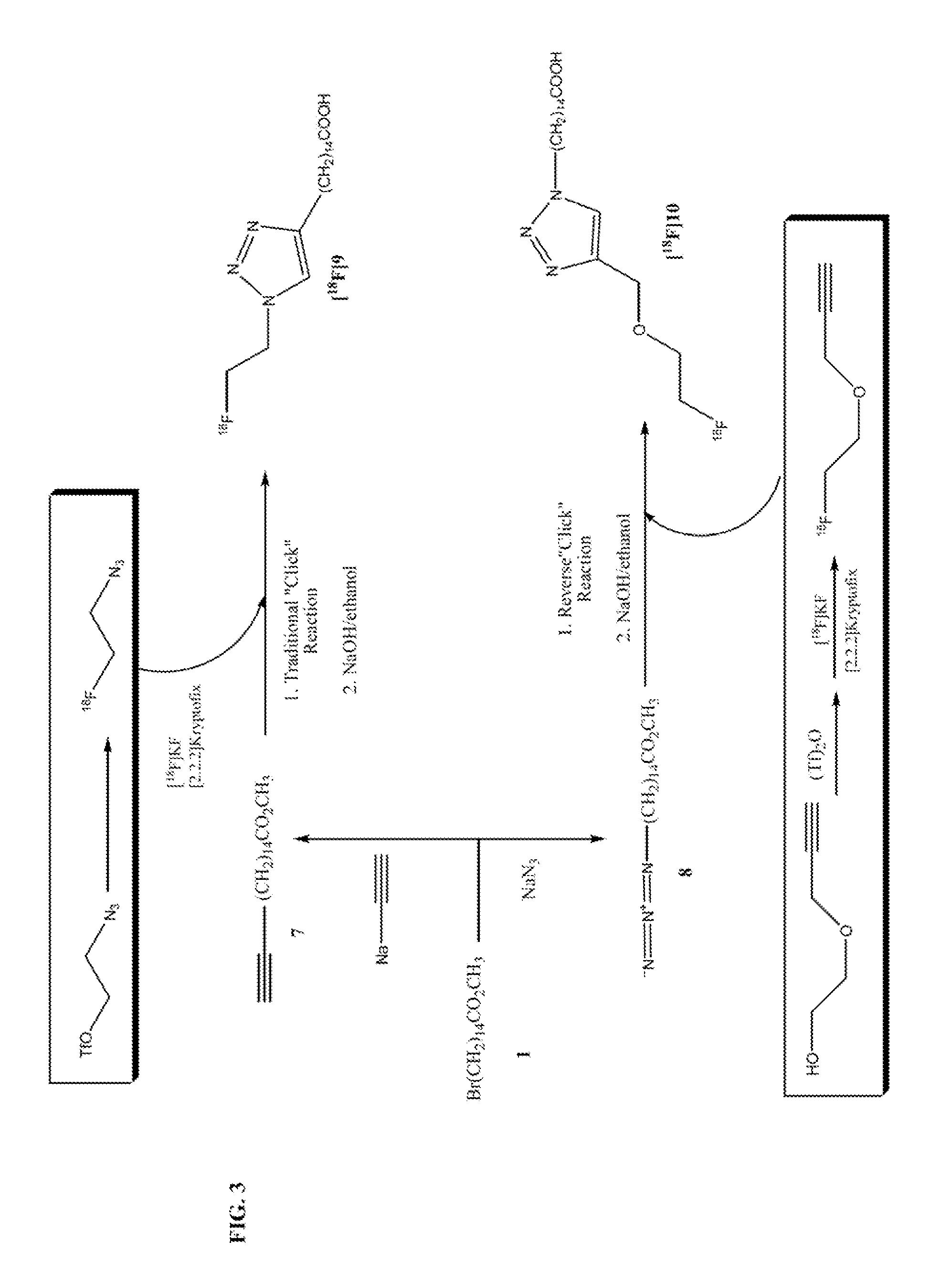Pet radiotracers for imaging fatty acid metabolism and storage
a fatty acid metabolism and radiotracer technology, applied in the field of tracers, can solve the problems of inability to quantify fa, inability to take advantage of the rapid turnover of ippa to permit high quality imaging and quantification, and inability to quantify myocardial substrate us
- Summary
- Abstract
- Description
- Claims
- Application Information
AI Technical Summary
Benefits of technology
Problems solved by technology
Method used
Image
Examples
example 1
Small Animal Imaging
[0081]Animal Preparation. All animal procedures are conducted in compliance with the guidelines for the care and use of research animals established by the Animal Studies Committee of Washington University. Animal preparation is performed as described previously.24-26 Rats are housed in metabolism cages and anesthetized by inhalation of 2%-25% isoflurane administered via an induction chamber. Anesthesia can be maintained throughout the imaging session by delivering 1%-1.5% isoflurane via a custom-designed nose cone. Venous access is via the right jugular vein. Body temperature can be maintained using a circulating water blanket and a heat lamp. Heart and respiration rates can be monitored throughout the process.
[0082]PET Acquisition. The animals can be secured in a custom-designed acrylic restraining device and placed inside the field of view of the small-animal imaging PET scanner. Imaging acquisition starts Ss after a bolus injection of tracer via the right jug...
example 2
Large Animal Imaging
[0084]Animal Preparation. Purpose bred ˜6-10 kg male beagle dogs are fasted, anesthetized and instrumented as reported previously3,4. One femoral vein is camnulated to administer drugs. Catheters are placed in the thoracic aorta via the femoral arteries for arterial sampling and monitoring of arterial blood pressure. To obtain venous blood samples, a coronary sinus catheter can be placed via the right external jugular vein under fluoroscopic guidance as previously described.28. The ECG, arterial blood pressure and heart rate can be monitored throughout the process. All measurements can be performed on the microPET Focus 220. All procedures are conducted in compliance with the Guidelines for the Care and Use of Research Animals.
[0085]Pet Imaging Protocol. Two Imaging Protocols can be Used.
[0086]Protocol 1. A transmission scan can be performed initially to correct for photon attenuation. Following the transmission scan, 5-7 mCi of 15O-water can be administered as a...
example 3
[0088]This example illustrates the feasibility of our strategy, the first 60 mins of kinetics for a 2-fluoroethox analog of IPPA were compared with those of 11C-palmitate in the same animal (FIG. 4). Imaging of both radiotracers was for 60 min. Composite myocardial microPET images obtained from a fed rat studied with 11C-palmitate (Top) and a novel fatty acid analog labeled with 18F-FAA (Bottom). Images are displayed on the transaxial axis and represent data acquired 20-30 mins after tracer injection. 18F-FAA images displayed excellent quality and higher tracer activity than 11C-palmitate images. FIG. 4 presents individual microPET images. Top row (18-13330 and 19-12011) are 11C-palmitate images and bottom row (18-22135 and 19-21952) are 18F-FAA images. Increasing signal intensity is represented green to yellow to red (highest). Relatively similar tracer kinetics was noted (FIG. 5).
PUM
| Property | Measurement | Unit |
|---|---|---|
| Capacitance | aaaaa | aaaaa |
| Density | aaaaa | aaaaa |
| Distribution | aaaaa | aaaaa |
Abstract
Description
Claims
Application Information
 Login to View More
Login to View More - R&D
- Intellectual Property
- Life Sciences
- Materials
- Tech Scout
- Unparalleled Data Quality
- Higher Quality Content
- 60% Fewer Hallucinations
Browse by: Latest US Patents, China's latest patents, Technical Efficacy Thesaurus, Application Domain, Technology Topic, Popular Technical Reports.
© 2025 PatSnap. All rights reserved.Legal|Privacy policy|Modern Slavery Act Transparency Statement|Sitemap|About US| Contact US: help@patsnap.com



